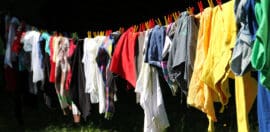Community-Owned Energy Projects Target Climate Change in Rural Aus
9 August 2016 at 2:44 pm
Rural Australia is hit hardest by climate change but there is a rise in community-owned energy projects which offer “unprecedented opportunities”, according to the Climate Council.
The council’s On the Frontline: Climate Change & Rural Communities report, released Tuesday, found climate change would likely worsen disadvantage suffered in rural and regional areas.
“This report… points out our rural communities are on the frontline of climate change impacts because many of these communities have their economy based on agricultural production and extreme weather events are already affecting agricultural production,” the Climate Council’s Professor Lesley Hughes told Pro Bono Australia News.
However, she said this was balanced by a “very positive message” that tackling climate change attracted jobs and investment back into the community.
“Rural communities have unprecedented opportunities to diversify their income streams and become more self sufficient by supporting community renewable energy projects,” she said.
“Rural areas receive about 30 to 40 per cent of investment in renewables in Australia, valued at $1 billion to $2 billion per year.”
The report said more than 28,000 jobs would be created nationally if Australia sourced half of its energy from renewables by 2030, particularly benefiting non-urban areas where large-scale projects tend to be located.
One of the country’s first community-owned energy projects, the Hepburn Community Wind Park, is a co-operative and B Corp in rural Victoria.
“It was totally community driven, so the community raised the money, the community are the shareholders and that’s providing energy now for that community,” Hughes said.
“It was Australia’s first community developed, owned and operated wind farm and it’s now producing electricity for 2,300 households in the local community.
“They raised money with street stalls and local community subscriptions, so it was a really, really grassroots campaign.”
With only 20 projects underway, the report said community developed and owned renewable energy was a relatively new phenomenon in Australia, compared to Europe and the United States.
But Hughes said it was a growing trend.
“It’s growing a lot. A lot of local towns… once they competed in the tidy towns competition… now there’s a lot of towns competing with each other to become the first totally renewable town,” she said.
“In New South Wales, the town of Uralla is trying to become the first town in Australia to supply all of its energy needs, and in 2014 Uralla successfully bid with competing other New England towns… for a $105,000 New South Wales Government grant to develop a business care to become a zero net energy town.
“They’ve got a two-stage approach to achieving their ultimate goal of 100 per cent renewable energy.
“There are many other towns around the country. Lismore is home to an award-winning solar project called Farming the Sun, and that’s installed $6.7 million worth of solar panel, solar hot water, solar thermal heating and cooling.
“They’re now focused on developing the first ever council-operated and community-funded solar farm in Australia.”
She said there were benefits across the board for communities who led their own energy projects, in addition to investment and job creation.
“For the environment, of course, anything that we can do to reduce our reliance on fossil fuels and replace that dirty energy with clean energy from either the wind or the sun or other renewable sources is a good thing because it helps drive down Australia’s emissions, which are per capita among the highest in the world,” she said.
“But I think there are a lot of other quite tangible community benefits. Anything that brings the community together builds social cohesion, it reduces power bills eventually, it reduces the reliance on importing oil and gas, so all of those benefits operate together.
“So there’s a lot of co-benefits of reducing emissions at the community level.”








